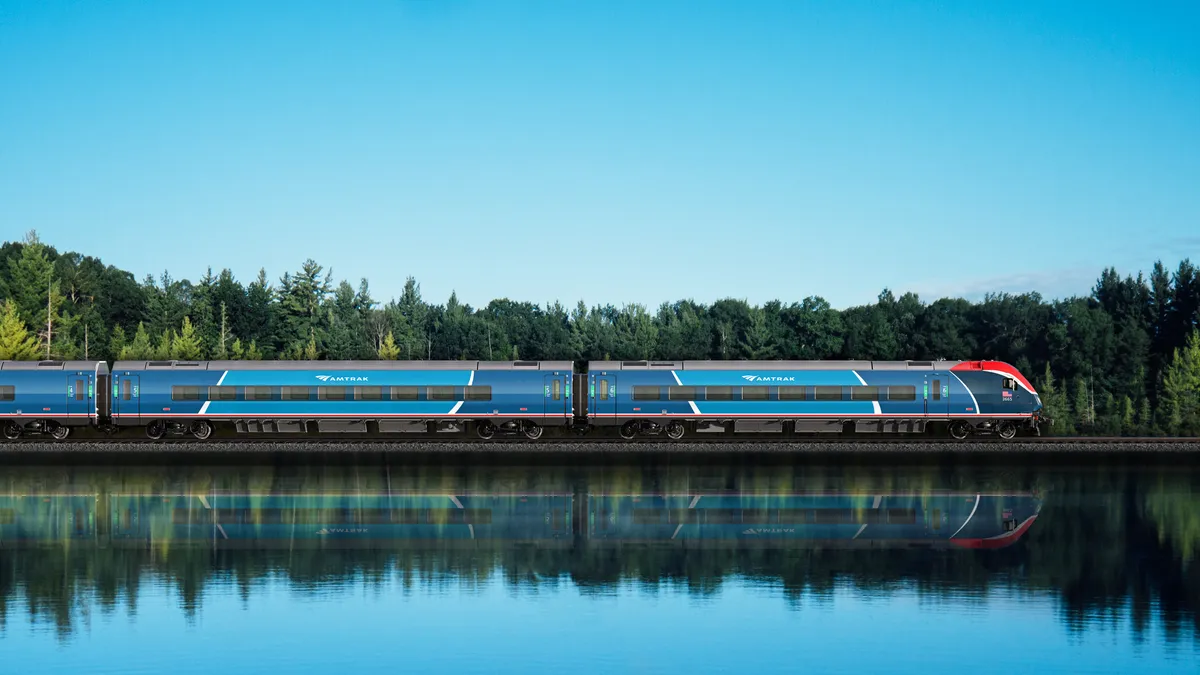Dive Brief:
- More than 90 applications for new Amtrak intercity passenger rail routes under 750 miles have been received by the Federal Railroad Administration’s Corridor Identification and Development program, Amtrak CEO Stephen Gardner said during an oversight hearing of the House Transportation and Infrastructure Committee Tuesday.
- While some House members used the hearing to advocate for new service in their communities, others grilled Gardner on the railroad’s finances, service, safety and security.
- Service has been returned to all of Amtrak’s network following the pandemic, Gardner said, with ridership in April at 89% of pre-pandemic levels. “By next year, we expect to reach our overall FY19 level of 32 million riders again,” he said.
Dive Insight:
Amtrak received the largest investment in its history from the 2021 bipartisan infrastructure law, which designated $66 billion toward new trains, tunnel and bridge improvements, repairs and maintenance and a program to add new routes and more service along existing intercity lines.
“Passengers and states want more rail service,” said U.S. Rep. Rick Larsen, D-Wash. Amtrak’s Cascades service, jointly funded by Oregon and Washington, operates between Portland, Oregon, and Seattle, with some trains continuing to Vancouver, British Columbia. Gardner said two additional daily round trips, for a total of six, would be added this fall.
Rep. Steve Cohen, D-Tenn., asked Gardner about adding train service from Memphis to Nashville and on to Chattanooga, Tennessee, as well as Atlanta and Little Rock, Arkansas, adding that there is “a great amount of support in Memphis and Nashville.” Tennessee has applied for a grant to develop that route under the Corridor Identification and Development Program, Cohen said.
Other support for new and expanded Amtrak service came from Rep. Tracey Mann, R-Kansas, who said he supports long-distance trains such as the Southwest Chief that runs through Kansas, and from Rep. Greg Stanton, D-Arizona, who noted that Phoenix is “the largest city in the United States without access to passenger rail service.” Stanton said he’s hopeful that will change, adding that Arizonans would like to see train service between Phoenix and Tucson.
Rep. Donald Payne, D-N.J., remarked on the efforts of North Carolina and Virginia “to drive an increase in the [number of] intercity rail passengers.” Gardner attributed growing ridership on state-funded trains in those states to “a sustained program of investment and leadership.”
“When you look at the current state-supported system, we’ve seen really a lot of enthusiasm from all over,” Gardner said. “I think it’s really important to note that this drive to grow and improve service is really state- and community-driven.”
Rep. Troy Nehls, R-Texas, spoke against Amtrak network expansion, however. “While growth is a positive trend for a company, Amtrak must prioritize improving its current network, including important system maintenance and upgrades, and improving safety, security and customer satisfaction issues that have plagued Amtrak for years over expansion ambitions,” he said. Other Republican committee members echoed Nehls’ concerns about security, along with issues of reduced ridership and federal funding for the railroad.
Gardner acknowledged that “business travel is down about 30%, [and] with it, revenues.” But, he said that the demand for leisure travel is strong, and Amtrak is “working really hard to increase ridership.”
Amtrak is a federally-chartered corporation Congress established in 1970 to take over most intercity passenger rail service that private-sector freight railroads previously provided. It receives annual appropriations from Congress and is governed by a board of directors appointed by the U.S. president and confirmed by the Senate.











